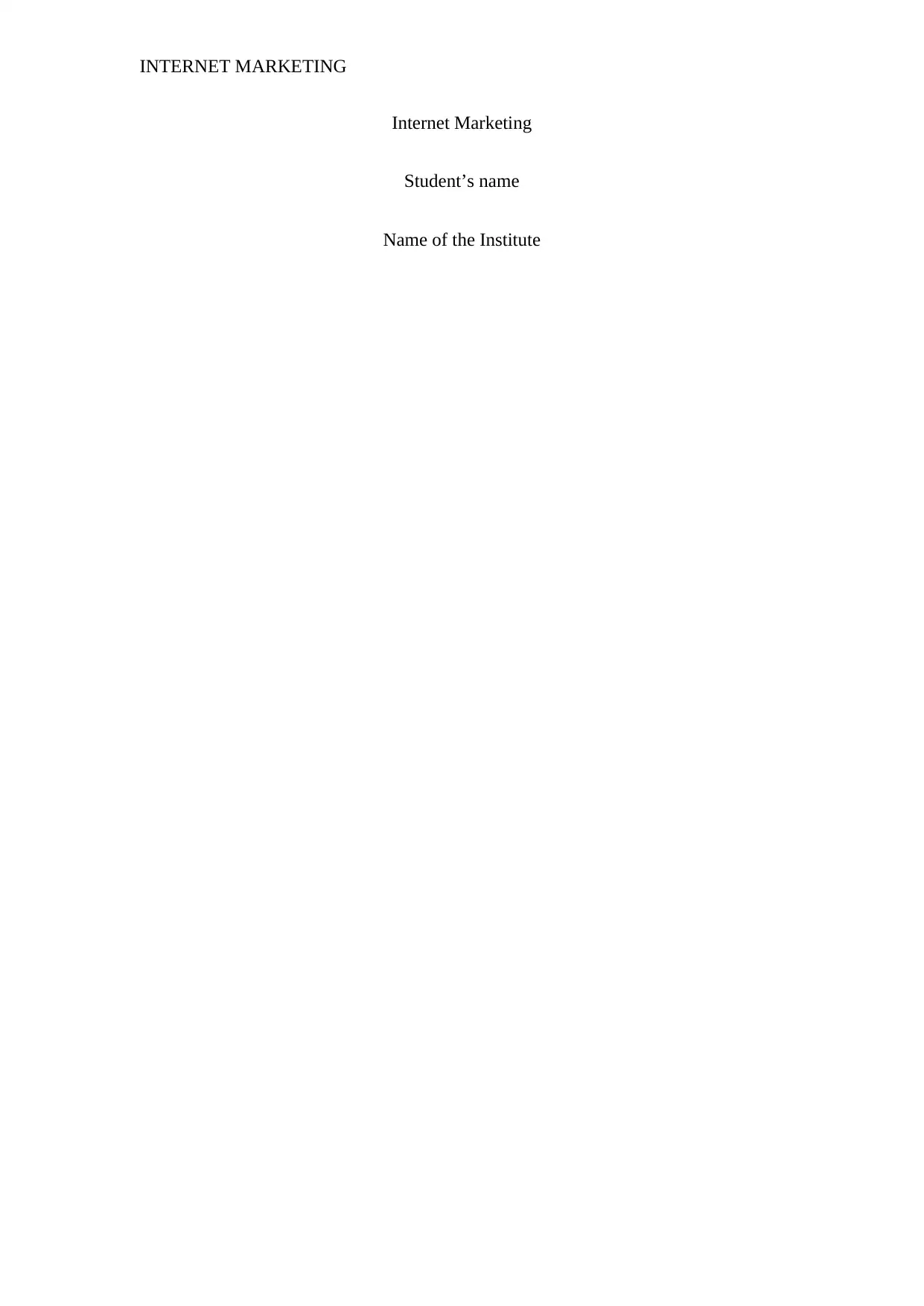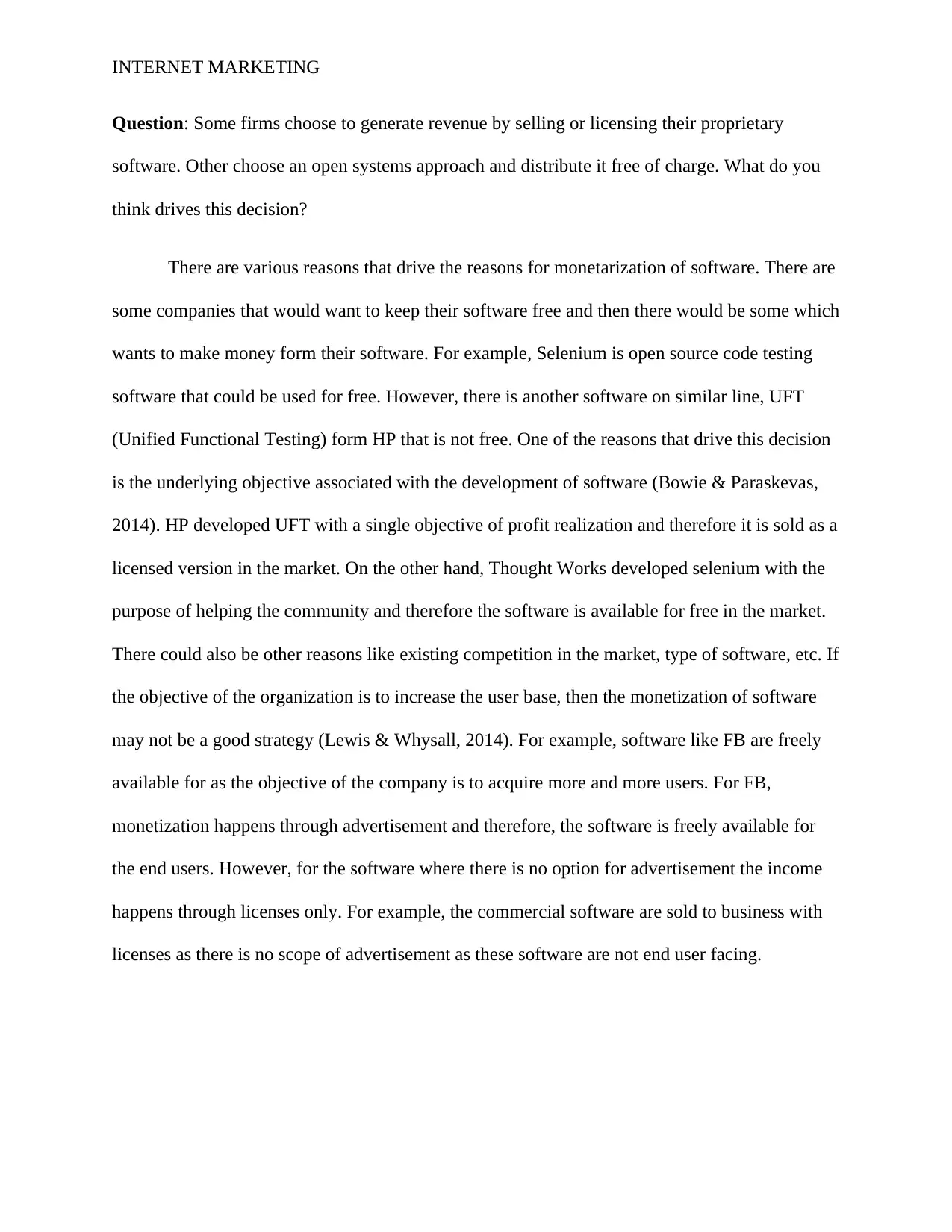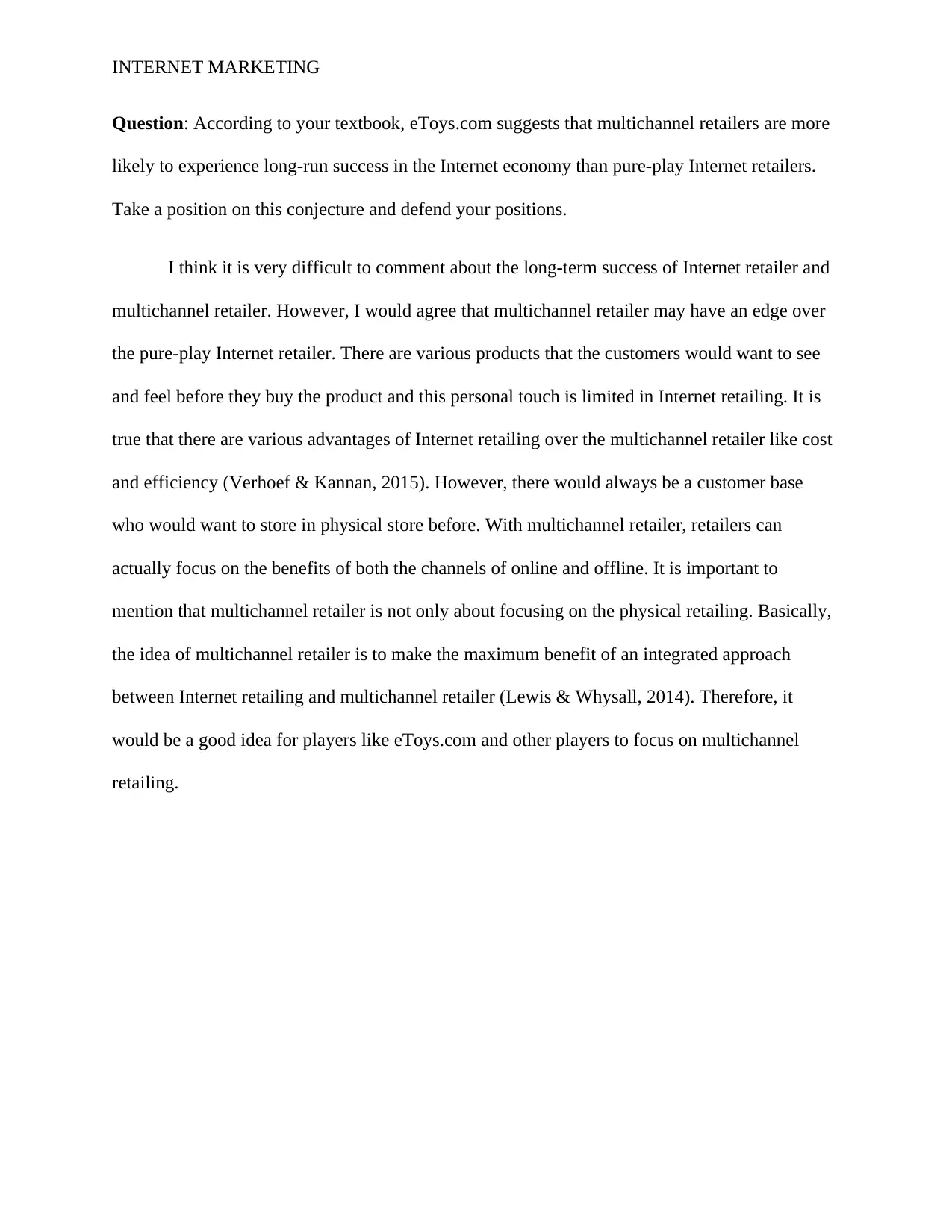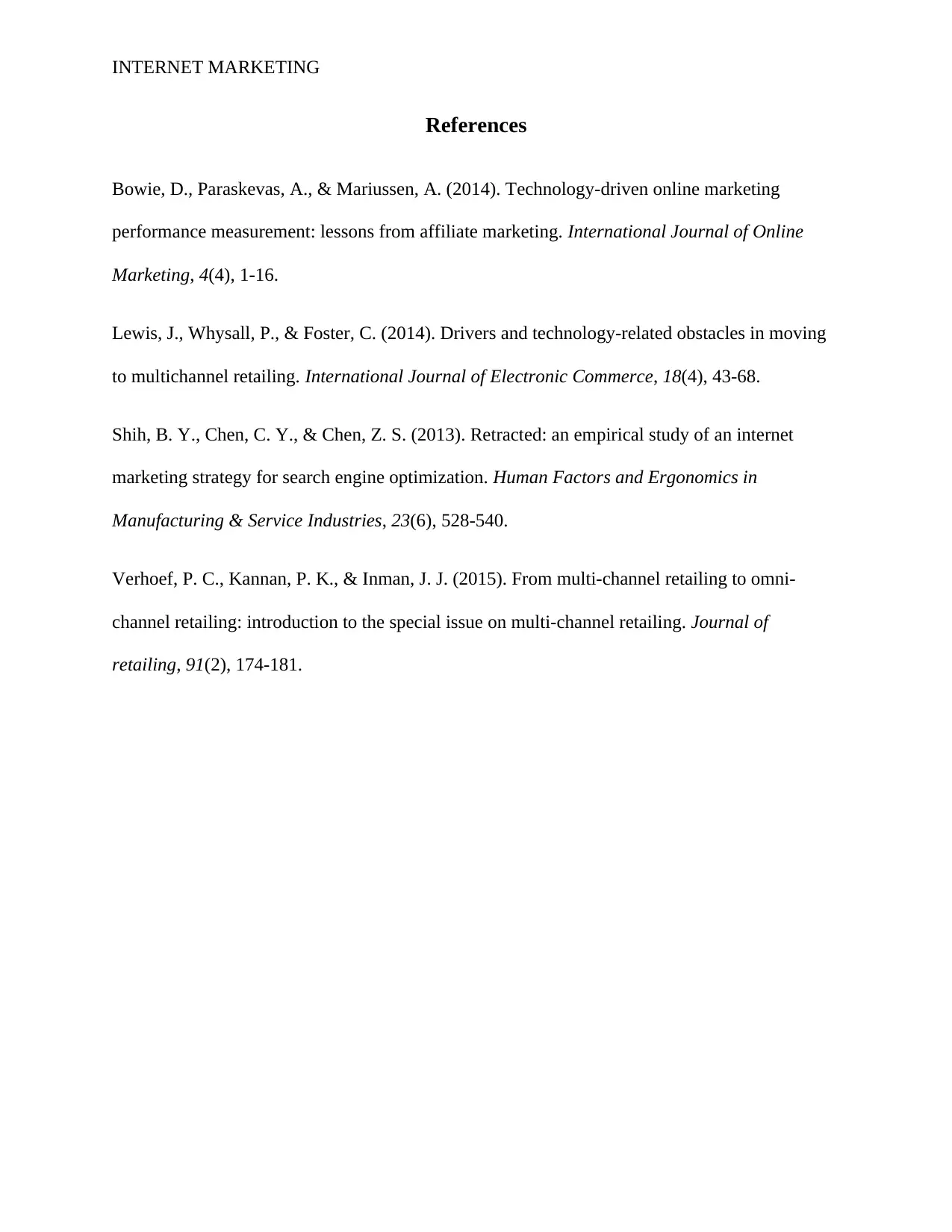Internet Marketing Assignment: Software, E-commerce, and Channels
VerifiedAdded on 2020/04/01
|4
|769
|240
Homework Assignment
AI Summary
This assignment solution delves into the core concepts of internet marketing, addressing the crucial decision-making process behind software monetization strategies. It contrasts the approaches of selling or licensing proprietary software versus adopting an open-source model, providing examples like UFT and Selenium to illustrate the factors influencing these choices, such as profit objectives and community engagement. Furthermore, the assignment explores the long-term success of multichannel retailers compared to pure-play internet retailers, arguing in favor of the former by highlighting the importance of a combined online and offline presence to cater to diverse customer preferences and leverage the benefits of both channels. The solution emphasizes the advantages of an integrated approach for retailers like eToys.com, ensuring maximum benefit from both online and offline strategies. The assignment is supported by relevant academic references.
1 out of 4







![[object Object]](/_next/static/media/star-bottom.7253800d.svg)